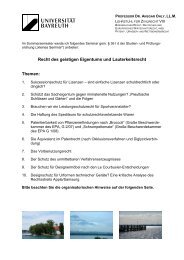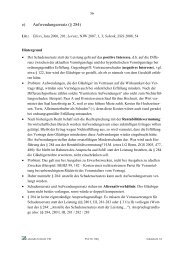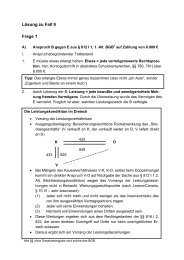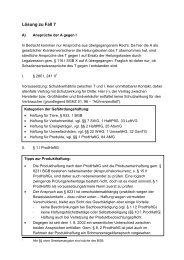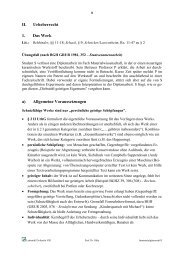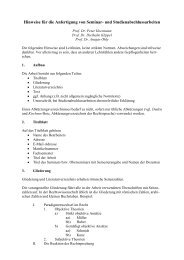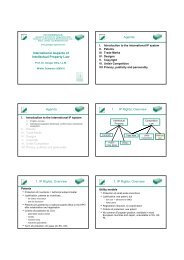3. Wrongful interference with goods, trespass to land, nuisance
3. Wrongful interference with goods, trespass to land, nuisance
3. Wrongful interference with goods, trespass to land, nuisance
Create successful ePaper yourself
Turn your PDF publications into a flip-book with our unique Google optimized e-Paper software.
7<br />
potential damage is physical the answer is more simple. There is, subject <strong>to</strong> what appears hereafter, no<br />
excuse I can see which exonerates the defendants from liability in <strong>nuisance</strong> for what they have done or<br />
from what they threaten <strong>to</strong> do. It is true that no one has yet been physically injured. That is probably due<br />
<strong>to</strong> a great extent <strong>to</strong> the fact that the householders in Brackenridge desert their gardens while cricket is in<br />
progress. The danger of injury is obvious and is not slight enough <strong>to</strong> be disregarded. There is here a<br />
real risk of serious injury.<br />
There is, however, one obviously strong point in the defendants' favour. They or their predecessors have<br />
been playing cricket on this ground (and no doubt hitting sixes out of it) for 70 years or so. Can someone,<br />
by building a house on the edge of the field in circumstances where it must have been obvious that balls<br />
might be hit over the fence, effectively s<strong>to</strong>p cricket being played It does not seem just that a longestablished<br />
activity - in itself innocuous - should be brought <strong>to</strong> an end because someone chooses <strong>to</strong><br />
build a house nearby and so turn an innocent pastime in<strong>to</strong> an actionable <strong>nuisance</strong>. Unfortunately,<br />
however, the question is not open. In Sturges v. Bridgman, 11 Ch.D. 852 this very problem arose. The<br />
defendant had carried on a confectionery shop <strong>with</strong> a noisy pestle and mortar for more than 20 years.<br />
Although it was noisy, it was far enough away from neighbouring premises not <strong>to</strong> cause trouble <strong>to</strong> anyone,<br />
until the plaintiff who was a physician built a consulting room on his own <strong>land</strong> but immediately adjoining<br />
the confectionery shop. The noise and vibrations seriously interfered <strong>with</strong> the consulting room and became<br />
a <strong>nuisance</strong> <strong>to</strong> the physician. The defendant contended that he had acquired the right either at common law<br />
or under the Prescription Act 1832 by uninterrupted use for more than 20 years <strong>to</strong> impose the<br />
inconvenience. It was held by the Court of Appeal (…) that it is no answer <strong>to</strong> a claim in <strong>nuisance</strong> for the<br />
defendant <strong>to</strong> show that the plaintiff brought the trouble on his own head by building or coming <strong>to</strong> live in a<br />
house so close <strong>to</strong> the defendant's premises that he would inevitably be affected by the defendant's<br />
activities, where no one had been affected previously: see also Bliss v. Hall (1838) 4 Bing. N.C. 18<strong>3.</strong> It<br />
may be that this rule works injustice, it may be that one would decide the matter differently in the absence<br />
of authority. But we are bound by the decision in Sturges v. Bridgman, 11 Ch.D. 852 and it is not for this<br />
court as I see it <strong>to</strong> alter a rule which s<strong>to</strong>od for so long.<br />
Lehrstuhl Zivilrecht VIII Prof. Dr. Ohly Introduction <strong>to</strong> English Law



